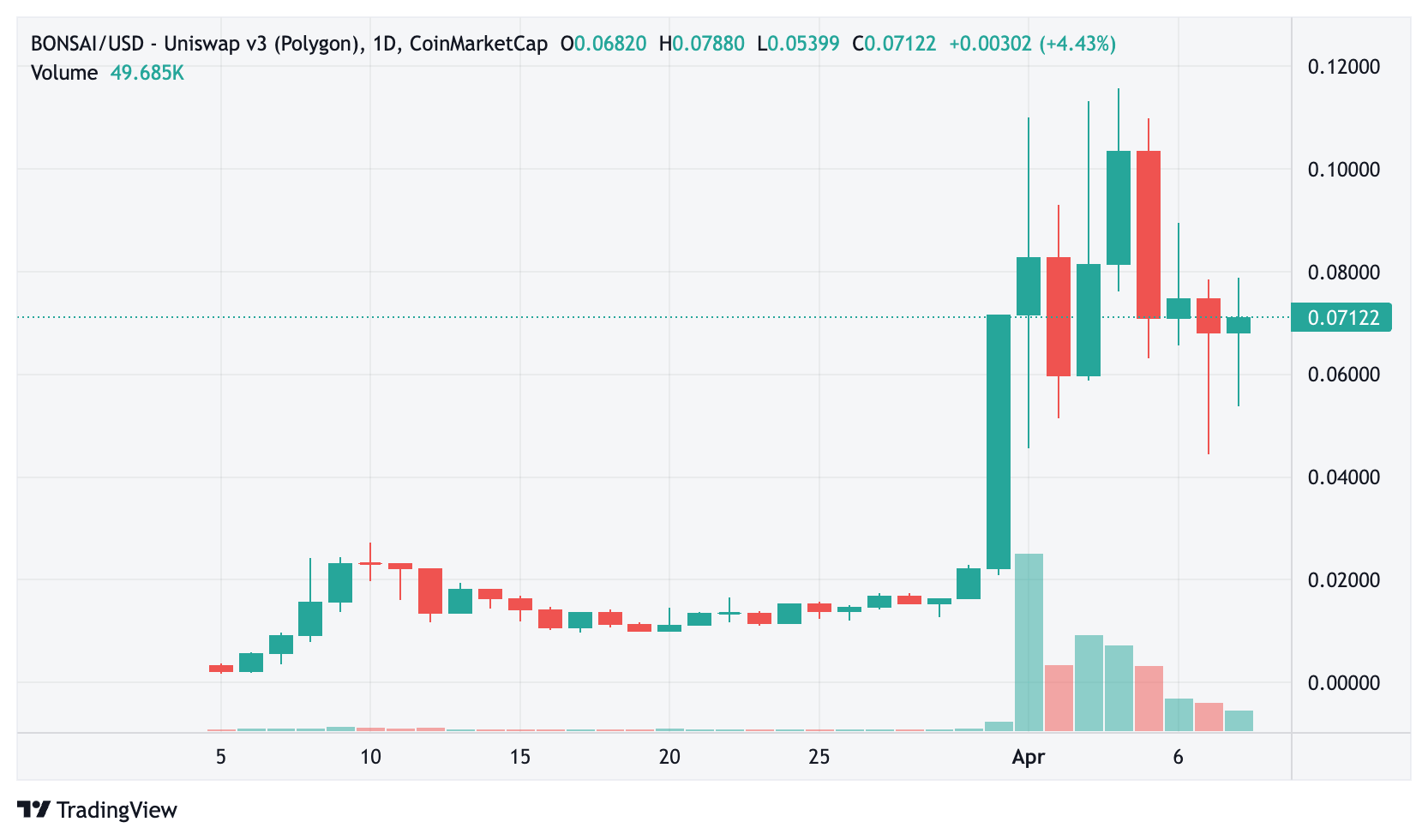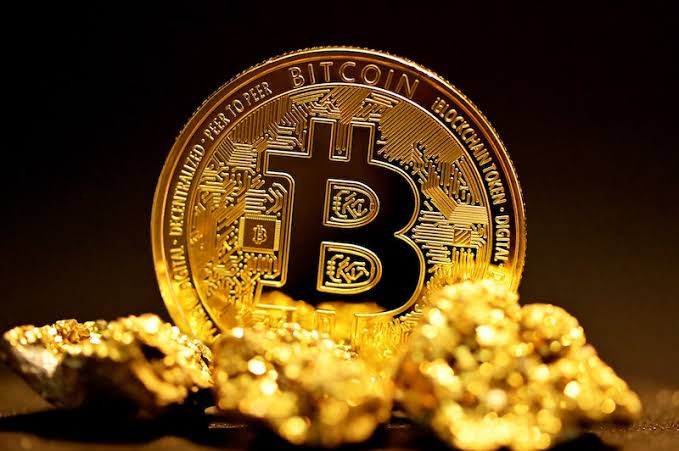Memecoins are a controversial topic that I usually go out of my way to avoid. While some view them as a lighthearted way to engage with the crypto community, others see them as nothing more than a speculative gamble with no real value. Further, my personal view is that much of the memecoin sector hurts blockchain more than it helps. I have nothing against people gambling with memecoins, but we should treat gambling as gambling and not hide behind the false narratives of ‘community.’
That said, and amid this debate, the Lens Protocol-based project Bonsai has emerged as an outlier.
Unlike many memecoins that rely solely on hype and speculation, Bonsai has taken a different approach. By integrating with the Lens Protocol, Bonsai has become a vital tool for content creators to monetize their work and engage with their communities.
Since its launch on March 4, Bonsai has gained significant traction within the Lens ecosystem. It has become the preferred currency for monetizable content, with a market share of around 77% of paid mints on Lens. Creators have earned over 3 million worth of $BONSAI (approximately $240,000 as of April 4). This demonstrates that memecoins can be more than just a fleeting trend – they can have real-world applications that benefit both creators and their audiences.
However, that has not stopped the price from rallying as any ‘good’ memecoin can. In the past month, it has surged by 2,000% since Lens users were first airdropped tokens.

What is Bonsai?
Bonsai is an innovative token launched on the Polygon blockchain, specifically designed for the Lens Protocol ecosystem. It combines the features of an ERC-20 token (BONSAI) and an ERC-721 non-fungible token (BONSAI NFT) in a unique implementation called DN-404.
One of the key features of DN-404 tokens is their fractionalization mechanism. Every 100,000 BONSAI tokens held in a wallet are equivalent to 1 BONSAI NFT. This means that users automatically own NFTs based on the number of BONSAI tokens they hold. If the token balance drops below 100,000, the corresponding NFT is lost. This unique interaction between the token and NFT contracts allows for seamless transfers and ownership tracking.
Bonsai has a total supply of 100 million tokens, with 60% allocated to the community through various airdrops and ecosystem support initiatives. The first airdrop was conducted at launch, distributing 10% of the total supply to active Lens users. Subsequent airdrops have rewarded community engagement and growth. A second airdrop occurred recently on Orb, and the Orb team celebrated adding minting functionality to its app with an additional BONSAI airdrop for early adopters. The remaining token allocation includes 15% for the team, 10% for investors, and 15% for liquidity.
Ultimately, the token serves as a community currency for builders, explorers, and early adopters of on-chain social platforms within the Lens ecosystem. It enables users to perform various on-chain actions directly from their Lens posts, such as collecting posts as NFTs, tipping, swapping tokens, and engaging in DeFi activities.
While other socialFi ecosystems such as Deso and Farcaster have utilized tokens to reward users, the nature of the Bonsai implementation feels unique due to the strength of the underlying protocol, Lens. Lens allows every post to be collected as an NFT. Further, additional functionality can be programmed into the mint at the click of a button. Creators can share royalties with collaborators, share income with fans who share content, and even assign commercial rights to those who collect posts. All of this is possible natively with Lens without any coding skills.
Bonsai’s success leads to a $100 million valuation.
Bonsai’s success has attracted significant investment from leading figures and organizations in the crypto and venture capital sectors. The recent $1 million angel funding round, which propelled the token’s market cap to nearly $100 million, is a testament to investors’ faith in Bonsai’s potential to revolutionize content monetization on blockchain networks. This support from industry leaders further validates Bonsai’s approach and highlights the growing recognition of memecoins as a legitimate avenue for driving community value.
Bonsai stands out as a beacon of hope in a space where many memecoins are criticized for their lack of substance and potentially harmful impacts. By aligning with the values of content ownership, social graph portability, and on-chain social actions, Bonsai is redefining what it means to be a memecoin. Rather than simply fueling speculation and hype, Bonsai fosters a community that rewards engagement, brings value to the ecosystem, and offers creators fair compensation for their work. As the crypto landscape continues to evolve, projects like Bonsai serve as an inspiration for how memecoins can be leveraged to drive real, meaningful change and create a more equitable and sustainable future for all.
Bonsai is supported by a wide range of applications within the Lens ecosystem, including Hey, Orb, Buttrfly, Kaira, Lenscan, Orna, Tape, Bloomers, Lenspeer, MadFi, wav3s, and Trustmebro. These applications leverage the $BONSAI token for various purposes, such as user acquisition, engagement, and monetization.
The team behind Bonsai, MadFi, states it is committed to building capabilities that support the creator economy. They believe that tokens can align platforms, creators, and users, providing effective monetization options for content creators, especially those in the long tail who might otherwise be marginalized.
Overall, Bonsai represents an exciting development in the Lens Protocol ecosystem, offering a unique and innovative approach to token economics, community engagement, and creator monetization. Its rapid adoption and growth demonstrate the potential for on-chain social platforms to revolutionize how creators and users interact and derive value from their content and engagement.
Bonsai, up to this point, has the potential to become a shining example of how memecoins can be redefined to drive genuine community value. Some will argue DEGEN was the first ‘community token’ but my view is that there is still huge speculation around interest in DEGEN.
Bonsai was not born off users hoping to get rich, it was born from a desire to trade memes, music, and art on social media using a fun digital currency. For me, this is the definition of a true memecoin and certainly that of a community token.
Disclaimer: I received an airdrop of Bonsai for my contributions to Lens Protocol, and I have earned Bonsai from users collecting my posts. I have also given away up to 90% of the Bonsai I have earned from specific posts through the mirror referral system on Lens.
My total Bonsai holdings are around 25,000 as of press time. I honestly do not care much about the value of the tokens; instead, I value what they facilitate on Lens. I spend my BONSAI freely collecting content from others, so if you make collectible content on Lens, feel free to tag me: akiba.lens.
The post Lens memecoins are built different – Bonsai becomes first genuine community token appeared first on CryptoSlate.












